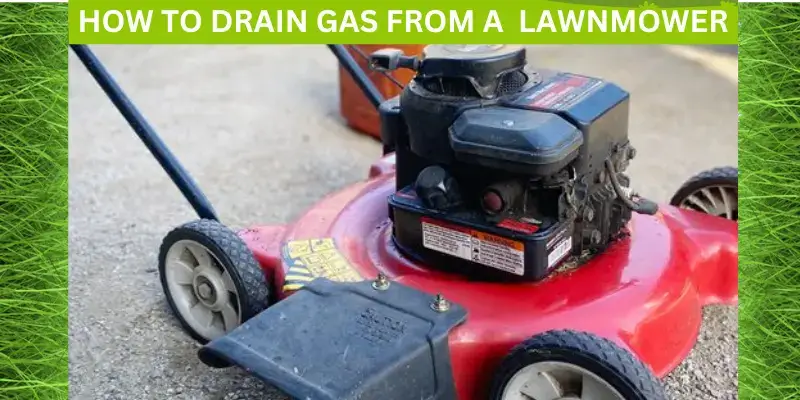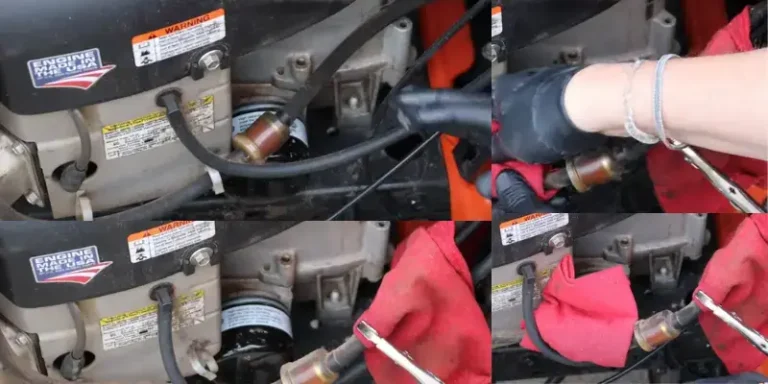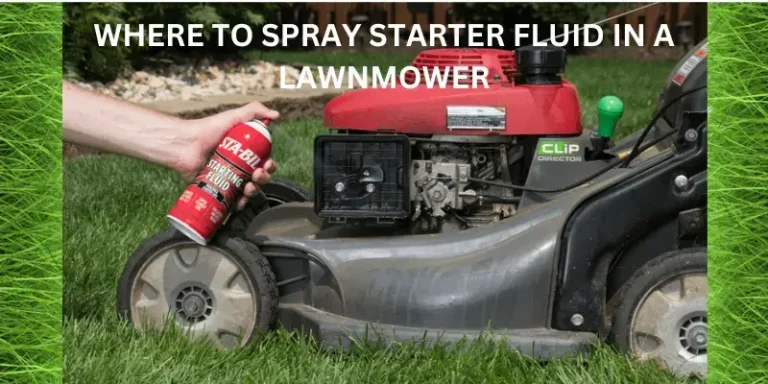How TO DRAIN A LAWNMOWER GAS
As winter passes and spring is going to start, people uncover their gardening tools and lawn mowers to start reshaping and repairing their gardens. Many homeowners face different problems with their gardening machines.
It is very clear that you are familiar with gasoline if you are a garden hobbyist. Have you researched that the old gasoline in your mower is so dangerous both for your machine and for you? It can ruin the performance but also seized the engine in some particular cases.
Many people just park their mower in the winter and start mowing again without recommended servicing and maintenance of their machine which creates trouble in the long run. If you are a person who does not drain the old gas from the lawnmower it is possible that you are in trouble and your machine performance is reduced and may even stop working.
In this article, I write down the methods to drain your old gasoline safely at home and save money and time by visiting the workshops and calling the mechanic at your home.
METHODS TO DRAIN THE GAS FROM YOUR LAWNMOWERS
In this blog, I discussed two methods to drain the gas from your mower. These methods are:
- By using Siphon
- Without the use of a Siphon to drain the gas
FIRST METHOD: BY USING SIPHON
To drain the gas using Siphon; follow these steps:
STEP 1: SELECT THE APPROPRIATE SIPHON PUMP
The siphon pump is of different sizes and shapes, some of them are automatic others are manual. Both kinds of pump work in the same process. A pump is used to draw the gas from one point to another.
STEP 2: CONNECT THE TUBE TO THE MOWER TANK:
In the very second step, connect the tube properly with the tank, the suction provides force to start the siphon and similarly, gravity is responsible for the smooth flow of gas during the process. It may be noted that the container where you are transferring the gas must be put at the gas level in the tank so that the gas can easily transfer.
STEP 3: NOW START PUMPING:
In the third step when everything is properly set, now start pumping the siphon pump. If you are using the manual pump, you may use your hand to operate it. In the automatic pump case once you start the pump work automatically and make your work easier.
It may be noted that, must read the instruction manual of your pump before using it the first time. Read all the safety and operating tips so that you use them in the better way.
STEP 4: STOP THE PUMP:
In the fourth step, stop the pump when you notice that all the gasoline is drained into the container.
STEP 5: REMOVE THE PUMP:
In the fifth step, carefully detach the pump from the tank, clean it properly, and secure the tube and pump in a safe and dry place.
HOW TO DRAIN GAS WITHOUT USING A SIPHON
Siphon pump is not common and many homeowners cannot use this for their whole life, so people are asking about how to drain the lawnmower gas without using a siphon. In this method I guide you step by step to drain the old gas easily. The steps are as follows:
STEP 1: GATHERING OF REQUIRED TOOL/MATERIAL:
While starting the work, you need a container that is gas-resistant and used for gasoline storage. You may use drain pain if the container is not available.
Secondly, you need a draining tube. You can easily buy plastic tubes and hoses from the market at a cheap price.
Thirdly, you need safety gloves so that your hands are not exposed to the gas while draining process.
STEP 2: REMOVE THE SPARK PLUG WIRE:
After gathering the tools and material, now remove the spark plug wire for safety so that there is no presence of current during the draining process. It is also advised that if you drain the gas in the open atmosphere, do not do this in a closed place and also parks the mower on a stable and flat surface to avoid any incident.
STEP 3: FITTING OF TUBES:
In the third step, start fitting the tubes to the gasoline tank, always put the container or drain pain lower to the gas tank so that gas is easily drained.
Now start entering the tube inside the tank so that I reach the tank bottom and the other end put in the container/drain pan.
Use a shorter tube to create the air pressure. Carefully, close the fuel cap and check it twice so that gas cannot drain from it.
STEP 4: DRAINING THE GAS:
Now start the main step to drain the gas, this is a difficult task. You need to blow the air so that the draining process starts.
There are two ways to blow the air, one uses the air pump, and if you have an air pump your work is much easier. In a case, you have no air pump use your mouth to blow the air
If you are blowing the air with your mouth, be careful that gas fumes do not enter your mouth. It takes time do not in hurry to avoid any uncomfortable situation.
Once the gas starts flowing, stop the air blow and wait until the gas is completely drained.
STEP 5: RUN THE LAWNMOWER TO DRAIN THE REMAINING GAS:
In this method there is a possibility that a small amount of gas is still inside the mower, so you have to start the lawnmower until it stops due to an empty tank. In this way, you can easily drain the remaining gas.
SAFETY TIPS WHILE DRAINING GAS FROM LAWNMOWER
It is worth mentioning that gasoline is highly flammable and catch the fire within a second and create a disaster in your home if you are not careful.
In general, people do not care much about safety tips but during this process, it is mandatory not to bypass any safety tips. The essential safety tips are:
CONCLUSION
To conclude, draining old gas in your lawnmower is the most important task to keep your machine up to the mark. In both conditions, if you are storing your machine for a long time or you forget to drain the gas and now you start mowing again. It is advised that drain the old gasoline and refill it with fresh gas. It will make your mower performance constant and you are also not facing trouble in the near future. I discussed both methods, using a siphon and without using the siphon pump. I tried to make it short and to the point so that you can save your money as well as time. I also write down the safety tips during the gas draining procedure. I hope you find this article helpful. Happy Gardening!
FREQUENTLY ASK QUESTIONS (FAQs)

About Naveed A Hashmi
In my childhood, I used to see my parents while working in the land, for these reasons today I have been serving the same as our own tradition and culture. I thus love to stay in it, because I want to learn something advanced and new so that I may improve my farm’s contour and help others with my experience.







